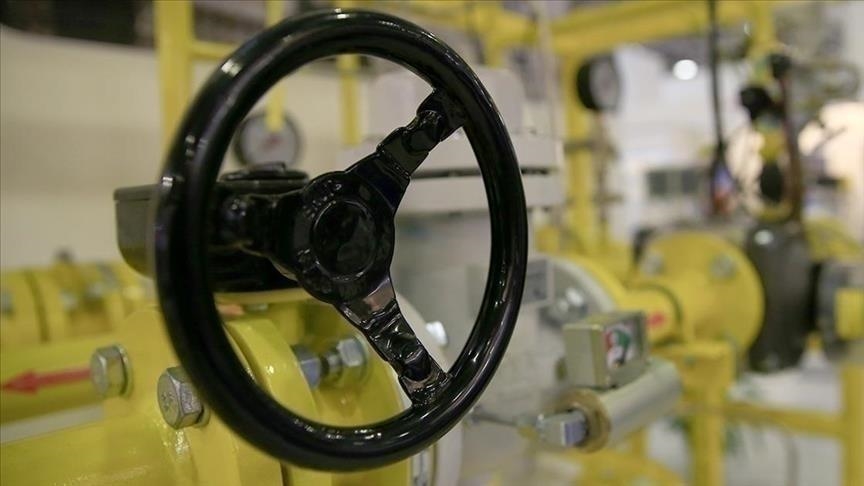

By Anadolu Agency
ISTANBUL
Global natural gas markets are set to remain tight next year, with lower gas flow from Russia to Europe, high gas prices, lower demand and the impact of energy saving measures, according to the International Energy Agency’s Gas Market Report Q4 2022 published Monday.
As Russia’s curtailment of natural gas flow to Europe leads to new highs of international prices, it also disrupts trade flow, leading to fuel shortages in some emerging and developing economies, the IEA said.
Russia’s reduced flows to Europe deepens market tensions and uncertainty ahead of the coming winter, not just for Europe but also for all markets that rely on the same supply pool of liquefied natural gas (LNG), according to the report.
“Russia’s invasion of Ukraine and sharp reductions in natural gas supplies to Europe are causing significant harm to consumers, businesses and entire economies, not just in Europe but also in emerging and developing economies,” said Keisuke Sadamori, the IEA’s director of Energy Markets and Security.
“The outlook for gas markets remains clouded, not least because of Russia’s reckless and unpredictable conduct, which has shattered its reputation as a reliable supplier. But all the signs point to markets remaining very tight well into 2023,” he said.
Record gas demand reduction in Europe
The record high prices seen in European and Asian spot LNG markets reduced gas demand and incentivized the switch to other fuels such as coal and oil for power generation, according to the report.
Europe’s gas consumption dropped by more than a record 10% during the January-August period this year compared with the same period of 2021, driven by a 15% fall in the industrial sector as factories curtailed production.
Europe increased LNG imports, as well as alternative pipeline supplies from Norway and elsewhere, to offset the sharp falls in Russian gas supplies.
Europe’s demand for LNG grew by 65% in the January-August 2022 period from a year earlier. This demand has drawn supply away from the traditional buyers in the Asia-Pacific Region, where demand contracted by 7% over the same period due to high prices, mild weather and continued COVID-19 lockdowns in China.
Although natural gas prices in the US hit their highest summer levels since 2008, North America was one of the few regions where demand increased, supported by demand from power, the report found.
With the impact of market tightness and high prices, a 0.8% decline in global gas consumption is expected this year, with a record 10% contraction in Europe and unchanged demand in the Asia Pacific region.
Global gas consumption is expected to grow by only 0.4% in 2023. However, the outlook is subject to a high level of uncertainty, particularly in terms of Russia’s future actions and the economic impacts of sustained high energy prices, the IEA said in the report.
Europe’s growing LNG inflows imply lower Asian LNG imports
The IEA forecasts that Europe’s LNG imports will increase by over 60 billion cubic meters this year, or more than double the amount of global LNG export capacity additions, keeping international LNG trade under strong pressure for the short to medium term.
“This implies that Asia’s LNG imports will remain lower than last year for the rest of 2022. However, China’s LNG imports could rise next year under a series of new contracts concluded since the beginning of 2021, while a colder-than-average winter would also result in additional demand from northeast Asia, further adding to market tightness,” the IEA said in the report.
The IEA’s resilience analysis of the EU’s gas market finds that the EU’s gas storage would be less than 20% full in February 2023, assuming a high level of LNG supply in the case of a complete Russian supply shutdown starting from Nov. 1, 2022, and without demand reductions in place or if Russian pipeline supply is completely cut.
Storage levels drop to 5% full capacity, assuming low LNG supply as storage falling to these levels would increase the risk of supply disruptions in the event of a late cold spell.
A reduction of 9% from the average level of the past five years in EU gas demand through the winter period would be necessary to maintain gas storage levels above 25% in the case of lower LNG inflows, according to the analysis.
A reduction in demand of 13% from the five-year average would be necessary through the winter period to sustain storage levels above 33% in the case of low LNG inflows.
“Therefore, gas saving measures will be crucial to minimize storage withdrawals and keep inventories at adequate levels until the end of the heating season,” the IEA warned.
We use cookies on our website to give you a better experience, improve performance, and for analytics. For more information, please see our Cookie Policy By clicking “Accept” you agree to our use of cookies.
Read More